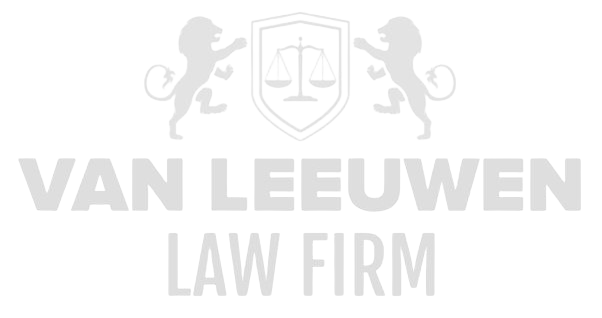In an era where every second can mean the difference between legal survival and reputational catastrophe, artificial intelligence no longer manifests as a mere technological curiosity, but as an existential force penetrating the very core of corporate governance. For the executive suite, AI is not an instrument of convenience, but a lens through which every decision, every financial movement, every transaction, and every document is subjected to relentless scrutiny. The capacity of AI to detect patterns in a sea of data means that errors, oversights, or, far worse, deliberate misconduct can emerge into the visible spectrum of compliance and legal oversight with a speed and precision that human perception cannot match. In this context, artificial intelligence becomes the unyielding mirror reflecting every action of corporate leaders, and the awareness of its presence can spell the difference between strategic triumph and public legal humiliation.
The implications extend far beyond the traditional boundaries of productivity and profit maximization. Utilizing AI to monitor internal processes, analyze financial flows, and predict compliance risks transforms the concept of responsibility at the highest levels of management. AI is not neutral; if misused, it can serve just as readily as a prosecutor, assembling evidence of financial mismanagement, corruption, or violations of international sanctions with relentless precision. In organizations where bribery, money laundering, or fraud exists even at the margins, AI becomes an uncompromising revealer, exposing inefficiencies, questionable practices, and legal vulnerabilities under an unrelenting spotlight. For the executive suite, this represents a paradigm shift: the conventional confidence in confidential internal decision-making is fundamentally redefined by the omniscient gaze of algorithms and predictive analytics.
Efficiency as a Strategic Weapon
The integration of artificial intelligence into operational processes enables a level of efficiency previously inconceivable. Where human judgment is delayed by subjective interpretation or fatigue, AI operates as an unstoppable force, accelerating processes, synchronizing data, and detecting anomalies before they escalate into systemic risks. For executive leaders accountable for financial integrity, this entails immediate and continuous oversight of transactions that may indicate corruption, fraud, or violations of international sanctions. Every anomalous pattern, no matter how subtle, can be identified, leaving no refuge in organizational complexity or incomplete reporting.
This degree of efficiency goes beyond mere cost savings or time gains. It empowers organizations to proactively mitigate legal risk by identifying potential regulatory breaches before they materialize into actionable cases. AI-driven analyses of financial flows, contracts, and correspondence reveal trends otherwise invisible, connecting individual actions to broader patterns of mismanagement or criminal intent. In a world where regulators increasingly rely on data-driven investigations, this implies that top executives are perpetually under scrutiny, and that negligence or intentional misconduct is unlikely to go unnoticed.
Perhaps most unsettling is that AI makes no distinctions between innocent errors and deliberate wrongdoing; every deviation is recorded, analyzed, and catalogued in an immutable chain of evidence. For leaders operating in the gray areas of ethics or legal risk, this creates a constant specter: a digital witness documenting every misstep, exposing every inconsistency, and relentlessly mapping any potential violation of international sanctions. Efficiency thus transforms into a strategic weapon capable of both protection and indictment.
Predictive Intelligence and Risk Management
AI’s capacity to model forward-looking scenarios and generate risk profiles fundamentally transforms management from reactive to proactive. Predictive algorithms analyze not only historical data but also the intricate connections between financial transactions, operational decisions, and external market influences. For the executive suite, this means that potentially illegal activities such as bribery, money laundering, or fraud are not merely detected—they can be anticipated. Every action that once seemed discreet or invisible can now be situated within a broader context, exposing patterns of misconduct at an early stage.
This predictive capability, however, demands a radical rethinking of internal governance. Executives accustomed to hierarchical structures where information is filtered and controlled now confront algorithms functioning entirely independently. AI not only exposes past missteps but identifies potential future violations, undermining traditional strategic autonomy through the unyielding logic of data. This system exploits weaknesses in internal controls to predict and quantify risk, sharply reducing the room for discretionary decisions in legally ambiguous territory.
Moreover, predictive risk management shifts the perception of accountability. These analyses pose an implicit challenge to leadership: if a pattern of potential fraud or corruption is visible and no action is taken, how does this reflect on legal liability? AI thus becomes an invisible yet terrifying co-executive: emotionless, objective, and perfectly capable of illuminating the contours of mismanagement and legal vulnerability while testing every decision against an unforgiving legal framework.
Compliance Transformation and Ethical Acuity
Implementing artificial intelligence transforms compliance from a reactive, administrative function into a strategic, inescapable element of governance. AI can continuously scan complex regulatory frameworks, evaluate transactions against international sanctions, and flag potential violations of anti-fraud legislation before they escalate into legal cases. This transformation necessitates that executives reconsider their understanding of ethics and responsibility; ethical compliance can no longer be regarded as a mere byproduct of business operations. AI demands an ethical acuity that confronts top leadership with the immediate consequences of their actions.
The power of AI lies in its absolute objectivity and precision in evaluating behavior and transactions. For organizations with historical or potential exposure to financial misconduct, corruption, or sanction breaches, AI functions as a permanent internal auditor, immune to loyalty or political pressure. Every deviation, however minor, is analyzed in the context of law and regulation, producing insights with immediate implications for legal strategy and reputational management.
Simultaneously, this environment generates a new form of leadership risk: failure to correctly implement or interpret AI systems can itself create legal consequences. Erroneous conclusions, poor data quality, or inadequate monitoring may produce blind spots in compliance, signaling negligence or insufficient oversight. AI is no longer merely a productivity tool; it is an inescapable factor in the ethical and legal architecture of the organization.
Strategic Decision-Making Under Scrutiny
The deployment of AI in strategic decision-making fundamentally alters the nature of leadership. Decisions once made confidentially and politically nuanced are now subjected to analytical precision exposing every risk, anomaly, and potential legal implication. For executives in sectors highly exposed to fraud, corruption, or sanctions, this means every choice can be monitored, evaluated, and extrapolated to legal consequences. Strategic freedom is replaced by a continuous imperative for transparency and demonstrable integrity.
This shift imposes immense pressure on intellectual and ethical capital. AI systems do more than supply information—they impose responsibility to act proactively based on observed risks. Leaders can no longer hide behind incomplete reports or procedural delays; the algorithm shows no mercy, recording every delay, inconsistency, and potential regulatory breach.
The most profound effect of AI on strategic decision-making may be the unrelenting light it casts on historical patterns. Decisions once deemed necessary or inevitable can now be scrutinized and evaluated for compliance, integrity, and legal soundness. For the executive suite, this creates a continuous confrontation with the question: how can each decision be justified in a world where algorithms map every nuance of potential misconduct and financial liability?
Innovation as Instrument and Danger
Innovation powered by AI offers unparalleled opportunities for productivity growth, market advantage, and operational refinement. At the same time, it becomes a potential legal weapon. New technologies and AI-driven processes can not only create competitive advantage but also reveal governance failures, control lapses, and vulnerabilities within the legal framework. In sectors where financial misconduct, corruption, or sanctions violations pose real risk, innovation can catalyze the exposure of misdeeds otherwise invisible.
The interplay between innovative AI solutions and legal oversight creates a paradox: the more an organization excels technologically, the sharper the exposure to legal scrutiny. Every improvement in productivity or data processing brings a corresponding potential for legal analysis and monitoring. For executives, this means progress is inseparable from heightened responsibility for compliance and ethical behavior, with AI serving as a constant, vigilant overseer.
Concurrently, AI provides the opportunity to steer innovation toward compliance alignment. Algorithms can evaluate transactions, decisions, and communication against legal frameworks and ethical standards, integrating innovation with risk mitigation. This requires a rare combination of strategic vision, legal acumen, and operational precision. For leadership, success is measured not only in market share or profit, but in the extent to which AI is leveraged as a tool for transparency, integrity, and legal readiness. Innovation becomes a double-edged sword: a source of power and a potential revealer of misconduct.










